Fresh vegetables can be on your plate soon if you plan crops for your early spring garden.
What to plant in the spring doesn’t have to be confusing. Just choose from the vegetables in the list below that can tolerate cooler weather and be ready for harvest in time to plant your regular warm-weather crops.
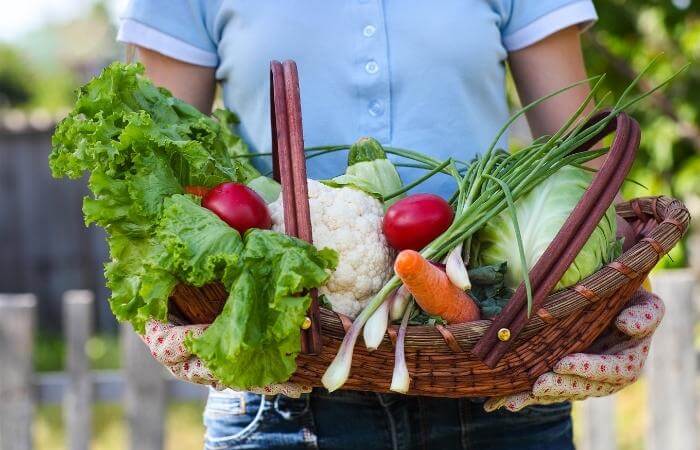
So, circle your zone’s last frost date on your calendar and get ready for all the delicious and nutritious spring veggies to plant below!
1. Asparagus

The beauty of growing asparagus is that this perennial vegetable needs planting once and will pop up from your garden when the soil reaches around 50°F.
If you’re starting asparagus from scratch, plant 2 or 3-year-old asparagus crowns (roots from an existing plant) in full sun a month or so before the last frost date if you can work the soil.
You can sow asparagus seeds in your spring garden, but be aware that it will take two or even three years for the plant to establish enough to produce a viable harvest.
2. Cauliflower

Cauliflower is perfect for early spring planting, with harvest falling in late May or June for most regions.
Cauliflower seeds average about 85-130 days to harvest. If you’re worried about the crop not maturing before the heat of summer, try the Snow Crown variety, which takes around 60 days to mature.
Once the heads reach six to eight inches, you can harvest and enjoy them.
You can start cauliflower indoors 4-6 weeks before the last frost date and transplant outdoors once the soil is workable.
3. Radishes
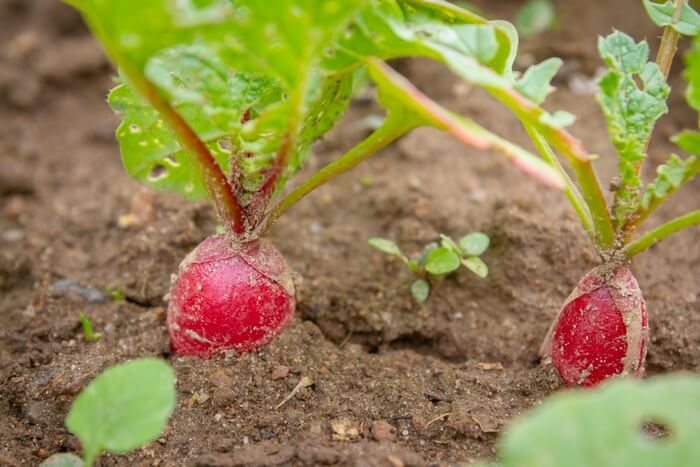
Radishes are an early spring go-to crop that matures quickly and needs little care. Crimson Giant and Cherry Belle varieties take about 25 days to reach harvest size.
Sow seeds as soon as the ground thaws, and leave room in your garden to add more seeds each week for the next month to extend your harvest.
4. Turnips

Turnips are another root vegetable that matures in one to two months.
You’ll want to direct sow the seeds, as turnips don’t transplant well. Try the Purple Top turnip variety for great results.
Bury seeds 1/2-inch deep and keep the soil moist but not wet. Thin seedlings out to 4-5 inches apart to allow ample room for tuber development.
5. Cabbage
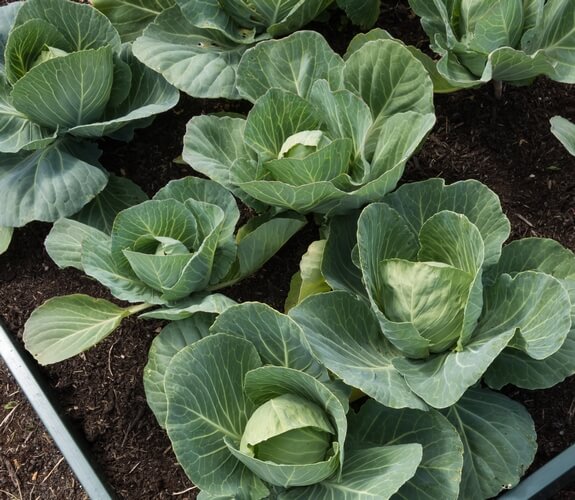
The earlier you can start your cabbage crop from seed in spring, the better, as this vegetable averages 60 to 120 days to reach maturity. You can cut time to harvest by starting cabbage indoors 6-8 weeks before the last frost and transplanting when the soil is workable.
It’s time to harvest cabbage when the tight inner head is about 6-8 inches across or when temperatures approach 80°F.
Try Early Jersey Wakefield cabbage for a fast-growing crop.
6. Brussels Sprouts
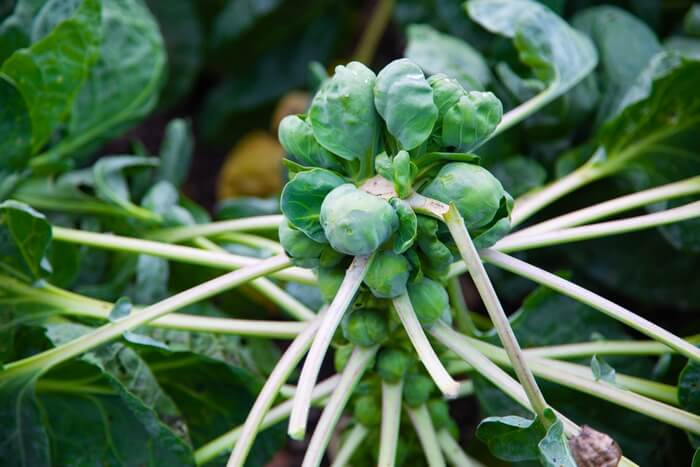
Brussel sprouts allow you to extend the harvest by picking mature sprouts from the bottom of the plant and letting new nodes form.
Expect the first sprouts in about 85 days if you choose the Jade Cross variety, or go with the 100-day-til-harvest Long Island Improved brussels sprout variety that is very hearty.
If your region’s spring weather quickly turns hot, start the Brussel sprouts indoors 4-6 weeks prior to the last frost so they can mature faster once you transplant them outdoors.
7. Collard Greens
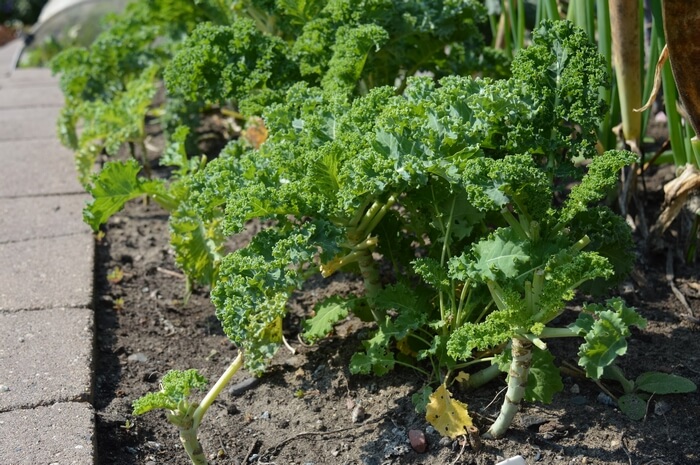
Collard Greens are ready for harvest 85-95 days from the time you direct sow them in your garden. Unlike lettuce, collard greens grow best in full sun.
Georgia Southern is a top variety for its tolerance to both the cold and heat, so you can direct sow them a couple of weeks before the last frost date yet not have to worry about the crop if the weather gets hot sooner than usual.
8. Lettuce
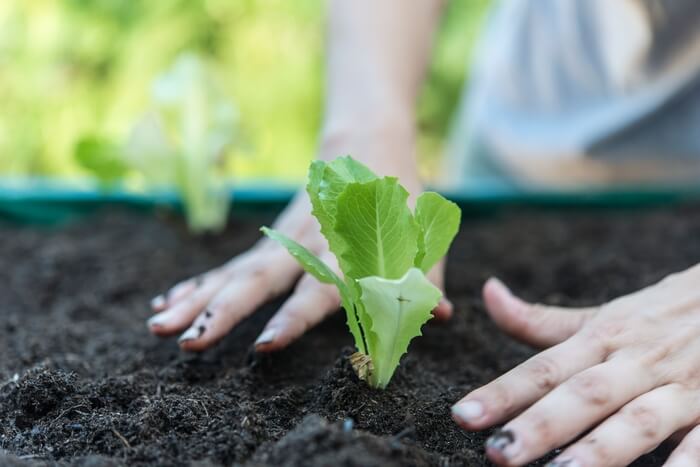
Lettuce does very well in spring, as it loves cooler temperatures, rainfall, and the less harsh sun.
Expert gardeners direct sow a wide range of lettuce varieties to enjoy all the various colors and flavors. You can sow seeds every ten days for even more lettuce production during the spring growing season.
If a later-than-expected frost arrives once lettuce sprouts, use a plant cover to insulate the seedlings until it passes.
Most head lettuce is mature in about 50 days, but you can tear off the small, tender leaves of cut-and-come varieties to make a salad after only a week or two of growth.
9. Kale
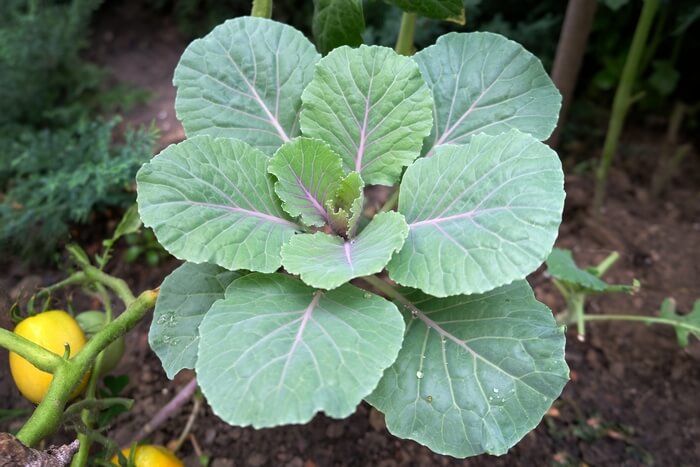
Kale is another leafy vegetable that thrives in early spring and will produce harvestable greens in only four weeks after direct sowing of seeds.
Get out a soil thermometer and plant seeds in your garden as soon as the ground hits 40°F.
You can purchase colorful and frilly varieties of kale to make your dishes more interesting.
10. Carrots
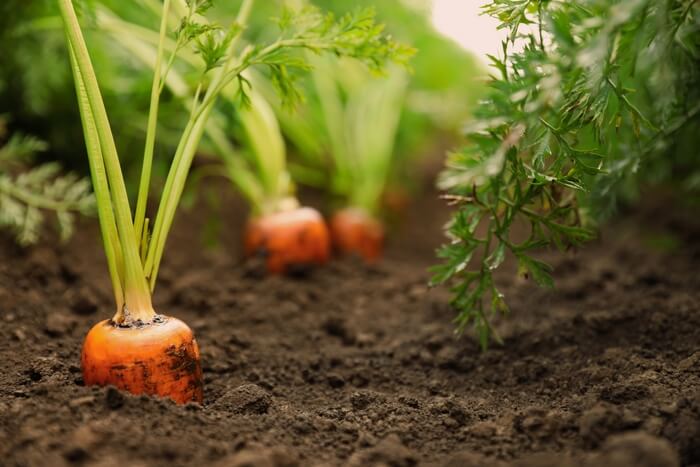
Carrots are another root vegetable that is best to plant in early spring. While most carrots mature in about 75 days, the Little Finger variety produces short and plump roots in only 55 days if you want a quicker harvest schedule.
Sow the seeds in a sunny spot in your garden and ensure the soil texture is very loose so that the carrots can grow without interference.
11. Sugar Snap Peas
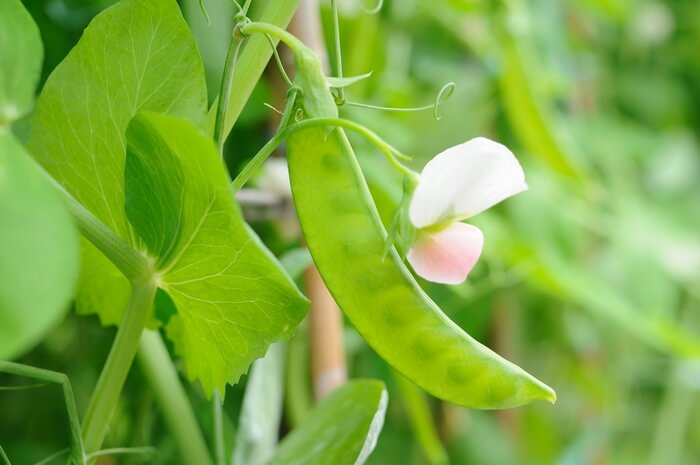
Sugar snap peas dislike heat, so the earlier you can get them planted in spring, the better. It’s safe to direct sow seeds once the soil temperature reaches 45°F.
Place seeds in a shallow trench right in front of a tall trellis so the stems can climb the supports.
It takes around 6-8 weeks for peas to be ready for harvesting.
12. Rhubarb
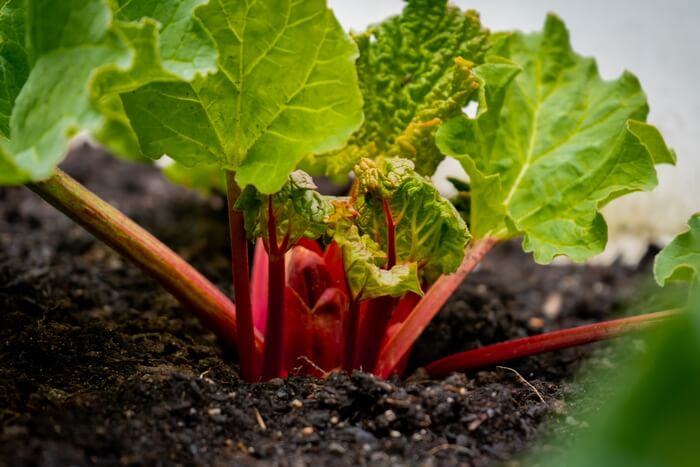
Rhubarb is super easy to grow, and like asparagus, the vegetable will resprout year after year for a decade or more. However, you’ll need patience, as you won’t get a crop the first year.
You’ll need to plant rhubarb crowns for quicker crop development, but it’ll still take an entire year or more for your first productive harvest.
Rhubarb plant seeds will take two years to develop into a harvestable vegetable, with each year afterward increasing the number of stalks you can cut. And you can compost rhubarb leaves that are leftover.
13. Garlic
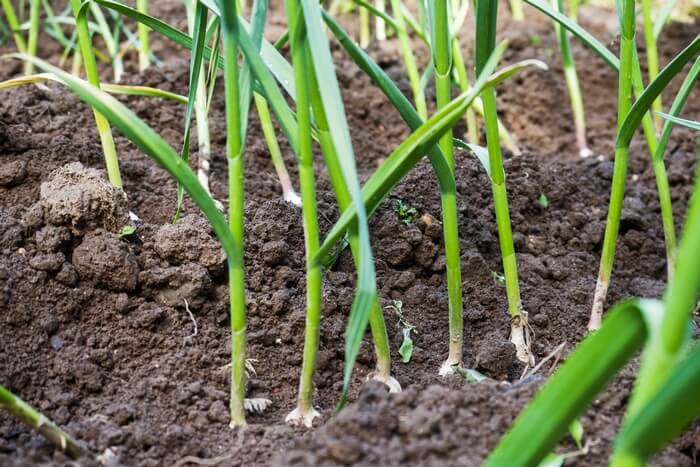
The key to a successful spring garlic crop is to ensure the bulbs (seeds) go through the vernalization process or cold spell that they require to reproduce.
You can leave the bulbs in a fridge for 4-8 weeks before planting, or plant garlic directly in your garden during a spell of warm late-winter weather and leave them to get cold before the final spring thaw.
Plant garlic cloves two inches deep and cut off flower stems that sprout during spring, which will help the bulbs grow larger.
14. Spinach

Spinach grows quickly and goes to seed just as fast, so keeping an eye on development will allow you to harvest as much as possible before it’s too late.
Expect the first harvest of direct-sown spinach in about 40 days. A mature spinach plant will have a rosette with five or six deep-green leaves. If the spinach foliage starts to yellow, it’s past its prime.
You can start sowing spinach seeds up to eight weeks before the last frost date.
15. Potatoes

Potatoes are a simple vegetable to plant in early spring, with mature spuds ready for harvest in 60-120 days, depending on the variety.
You can enjoy small and tasty “new potatoes” a few weeks after the potato plant stops flowering.
Place seed potatoes in the garden two to three weeks before the last frost date, and cover any seedlings that sprout if the forecast calls for freezing temperatures.
16. Beets
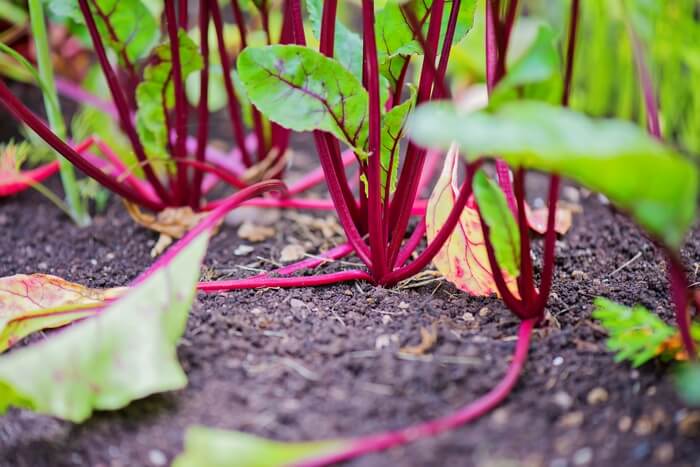
Beets are the perfect spring veggie to plant because they can handle frosts in the 30-32°F range without dying.
Beet seeds take about eight weeks to mature when grown from seed. It is best to space beets 4-6 inches apart in the garden, as they don’t like being crowded.
17. Broccoli

Broccoli can go into your garden 2-3 weeks before the last spring frost date as long as the soil temperature is 40°F.
Start broccoli seeds indoors around 6 to 8 weeks before your region’s last frost date.
Broccoli varieties take between 75 to 120 days until harvest, so choose one that best fits your weather conditions. High temperatures destroy broccoli heads, so you want plants to mature before summer heat hits.
In Summary
Knowing what spring veggies to plant after the last frost of winter will enable you to enjoy an early harvest and give you plenty of time to replant your garden for warm-weather crops.
I hope the list above of the best vegetable crops to plant in early spring inspires you to plan your garden now, so you can grow your favorites and add delicious and nutritious veggies to all your meals!










